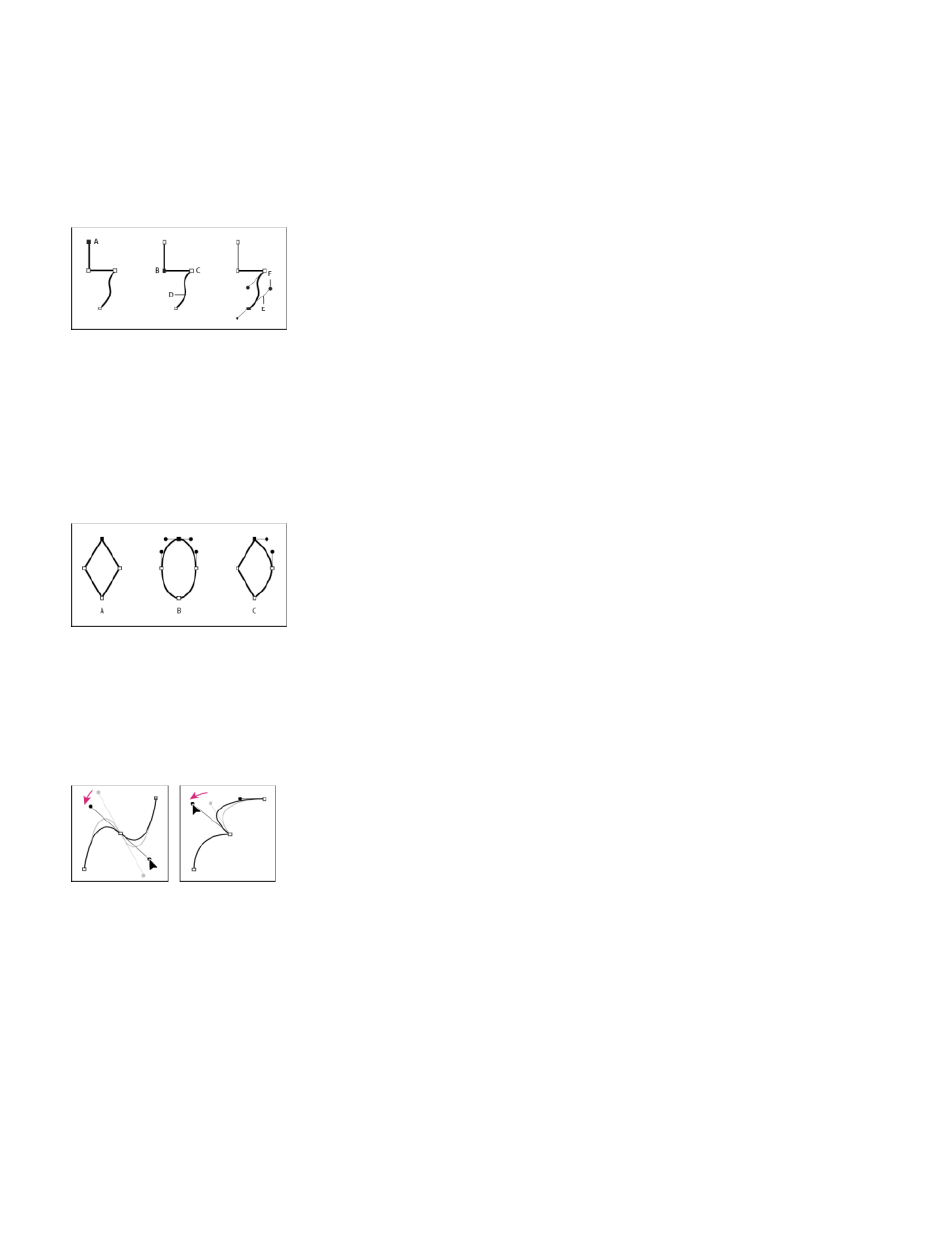Adobe After Effects User Manual
Page 314

for creating and editing these various kinds of paths overlap, but each kind of path has its own unique aspects.
A path consists of segments and vertices. Segments are the lines or curves that connect vertices. Vertices define where each segment of a path
starts and ends. Some Adobe applications use the terms anchor point and path point to refer to a vertex.
You change the shape of a path by dragging its vertices, the direction handles at the end of the direction lines (or tangents) of each vertex, or the
path segment itself.
As a path exits a vertex, the angle and length of the outgoing direction line for that vertex determine the path. As the path approaches the next
vertex, the path is less influenced by the outgoing direction line of the previous vertex and more influenced by the incoming direction line of the
next vertex.
Components of a path
A. Selected vertex B. Selected vertex C. Unselected vertex D. Curved path segment E. Direction line (tangent) F. Direction handle
Paths can have two kinds of vertices: corner points and smooth points. At a smooth point, path segments are connected as a smooth curve; the
incoming and outgoing direction lines are on the same line. At a corner point, a path abruptly changes direction; the incoming and outgoing
direction lines are on different lines. You can draw a path using any combination of corner and smooth points. If you draw the wrong kind of point,
you can change it later.
Points on a path
A. Four corner points B. Four smooth points C. Combination of corner and smooth points
When you move a direction line for a smooth point, the curves on both sides of the point adjust simultaneously. By contrast, when you move a
direction line on a corner point, only the curve on the same side of the point as the direction line is adjusted.
Adjusting the direction lines on a smooth point (left) and a corner point (right)
A path can either be open or closed. An open path has a beginning point that is not the same as its end point; for example, a straight line is an
open path. A closed path is continuous and has no beginning or end; for example, a circle is a closed path.
You can draw paths in common geometric shapes—including polygons, ellipses, and stars—with the shape tools, or you can use the Pen tool to
draw an arbitrary path. Paths drawn with the Pen tool are either manual Bezier paths or RotoBezier paths. The main difference between
RotoBezier and manual Bezier paths is that direction lines are calculated automatically for RotoBezier paths, making them easier and faster to
draw.
When you use the shape tools (Rectangle, Rounded Rectangle, Ellipse, Polygon, or Star) to draw a shape path on a shape layer, you can create
one of two kinds of paths: a parametric shape path or a Bezier shape path. (See
You can link mask paths, paint stroke paths, and Bezier shape paths using expressions. You can also copy and paste between mask paths, paint
stroke paths, Bezier shape paths, motion paths, and paths from Adobe Illustrator, Photoshop, and Adobe Fireworks. (See Creating shapes and
masks.)
310
